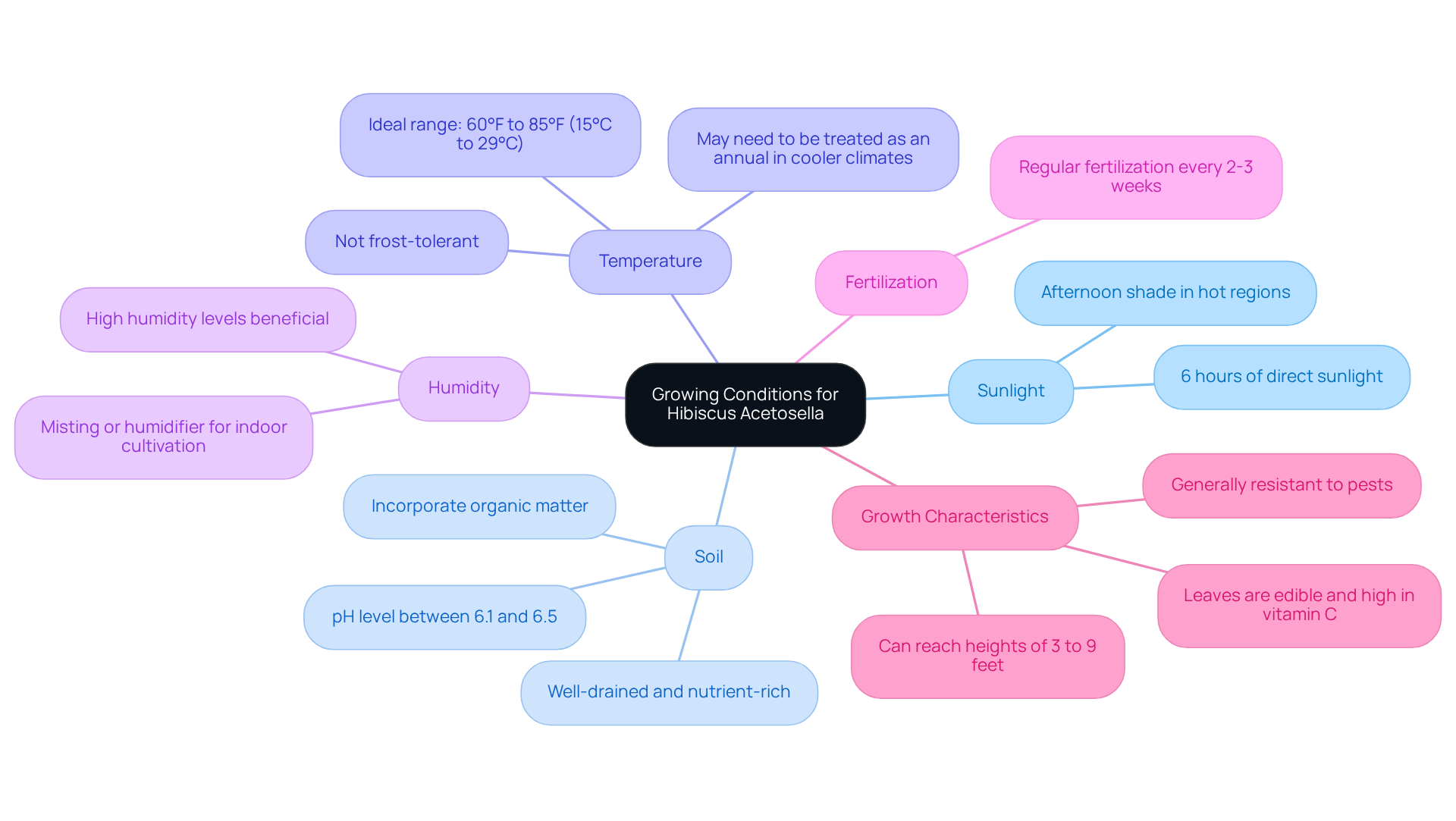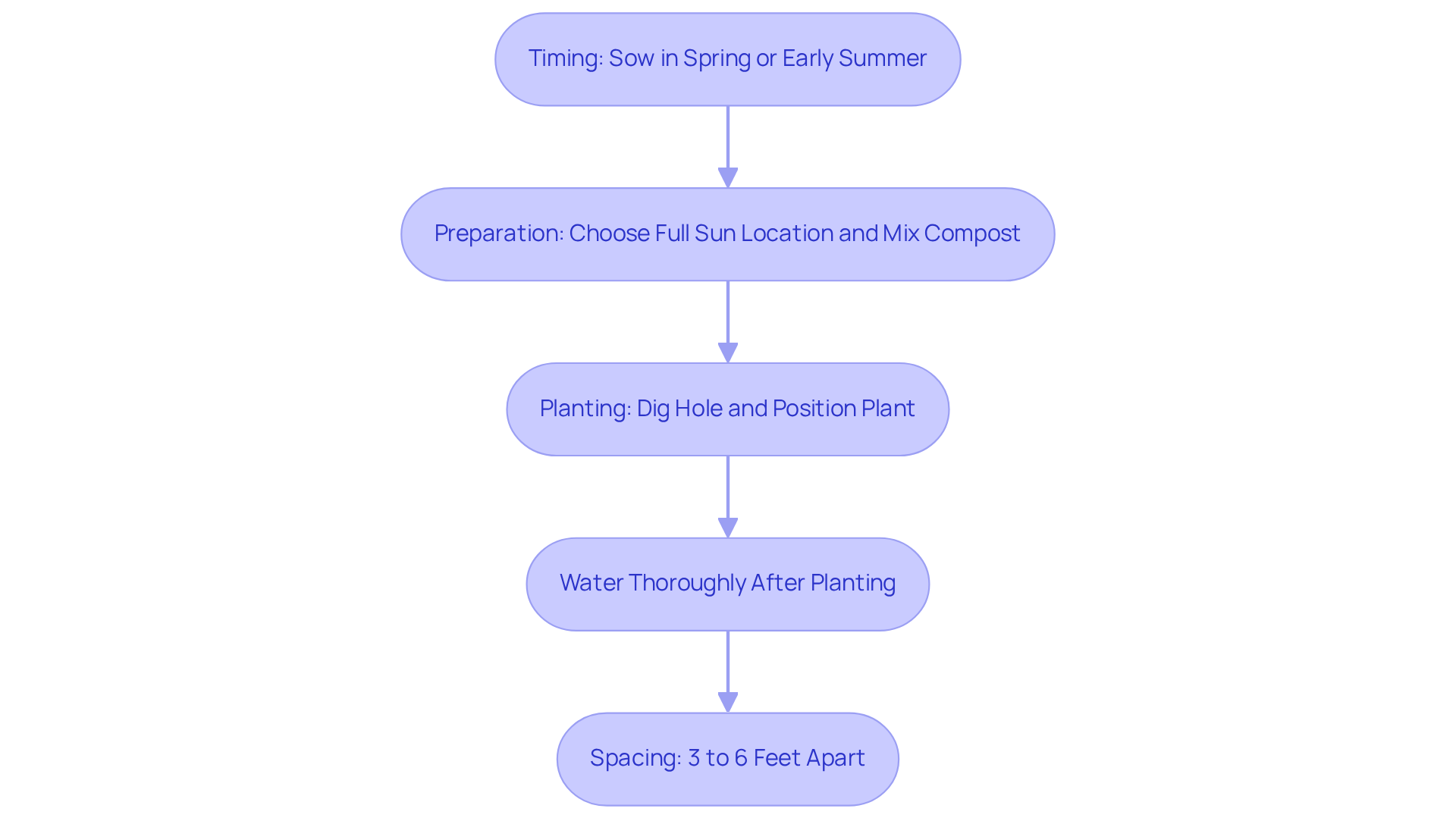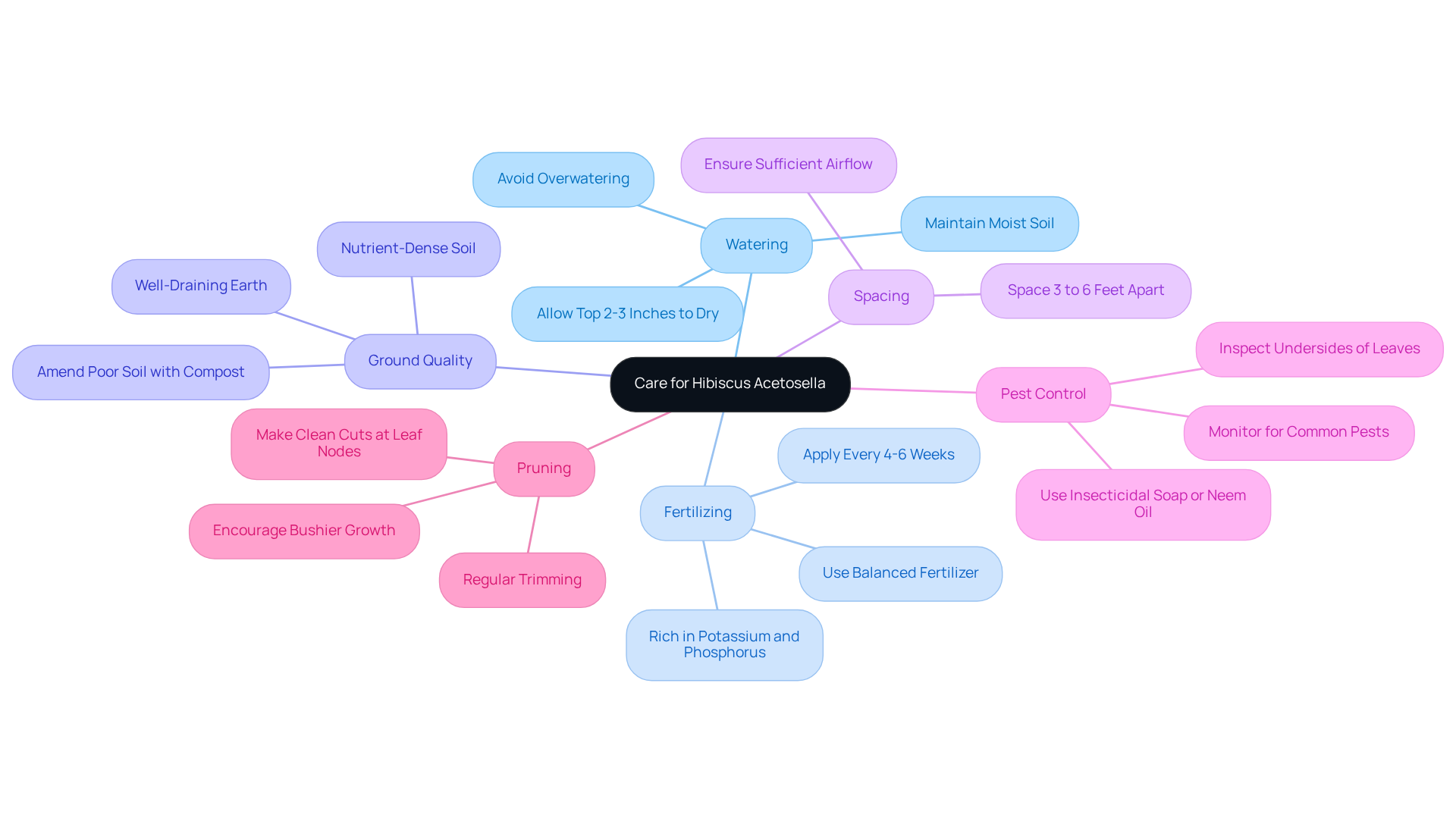Hibiscus acetosella, commonly referred to as Cranberry Hibiscus, serves as a vibrant addition to any garden, particularly thriving in warm, tropical climates. This guide explores the essential steps for cultivating this striking plant, encompassing an understanding of its growing conditions and effective propagation techniques. Given its specific requirements for sunlight, soil, and humidity, gardeners must consider how to create the ideal environment for this beautiful species to flourish.
Buy Hibiscus Acetosella for your garden
1. Understand Growing Conditions for Hibiscus Acetosella
Hibiscus acetosella, also known as Cranberry Hibiscus, thrives in warm, tropical climates. For optimal growth, it is essential to consider several key conditions.
- Sunlight is crucial; this plant flourishes with at least 6 hours of direct sunlight daily. In particularly hot regions, providing some afternoon shade can help prevent leaf burn and maintain plant health.
- The soil should be well-drained and nutrient-rich, with a pH level between 6.1 and 6.5. Incorporating organic matter can significantly enhance soil fertility and drainage, promoting robust growth.
- Temperature is another important factor; ideal conditions for Acetosella species range from 60°F to 85°F (15°C to 29°C). As this plant is not frost-tolerant, it may need to be treated as an annual or brought indoors during winter months in cooler climates to protect it from cold damage.
- High humidity levels benefit hibiscus acetosella. If cultivated indoors, consider misting the leaves frequently or using a humidifier to create a suitable atmosphere for optimal development.
Regular fertilization every 2-3 weeks during the growing season is crucial for achieving optimal growth and yield. In terms of growth characteristics, the cranberry hibiscus can develop long stems that reach approximately 9 feet in height, making it a striking addition to any garden. Additionally, this species is generally resistant to pests, easing maintenance concerns for gardeners.
The culinary uses of the cranberry hibiscus are noteworthy; the leaves are edible and can be incorporated into salads or teas, adding both beauty and utility to your garden. Lastly, Acetosella is versatile, suitable for various garden styles, including cottage gardens and containers, providing numerous landscaping options.

2. Plant Hibiscus Acetosella: Timing and Techniques
To successfully plant hibiscus acetosella, it is important to follow a series of well-defined steps.
-
Timing: The optimal moment to sow hibiscus acetosella is in spring, after the last frost, or in early summer. If you are starting from seeds, it is advisable to sow them indoors 6 to 8 weeks before the last frost date. This ensures that the plants are ready for transplanting when the weather is suitable.
-
Preparation: Selecting a location that receives full sun is crucial for the growth of hibiscus acetosella. Prepare the ground by mixing in compost, as this enhances both fertility and drainage, providing the plants with a healthy growing environment.
-
Planting: When planting, dig a hole that is twice the width of the root ball and the same depth. Position the plant in the hole, ensuring that the top of the root ball is even with the ground surface. After placing the plant, fill in with soil and water thoroughly to help establish the roots.
-
Spacing: If you are planting multiple hibiscus, it is recommended to space them 3 to 6 feet apart. This spacing allows for their bushy development, ensuring that each plant has adequate room to thrive.

3. Care for Hibiscus Acetosella: Watering, Fertilizing, and Pest Control
To ensure the thriving growth of your Hibiscus Acetosella, adhere to the following care guidelines:
-
Watering: Maintain consistently moist ground without waterlogging. During hot, dry spells, water consistently, allowing the top 2-3 inches of earth to dry out between waterings to promote healthy root development. Be cautious of overwatering, as this can lead to root rot.
-
Fertilizing: Apply a balanced, all-purpose fertilizer every 4-6 weeks throughout the growing season, from spring to early fall. Opt for a fertilizer rich in potassium and phosphorus to enhance foliage health and encourage vibrant blooms.
-
Ground Quality: These plants flourish in nutrient-dense, well-draining earth. If your soil is poor, consider amending it with compost to improve its quality.
-
Spacing: When planting, ensure that hibiscus acetosella is spaced 3 to 6 feet apart to allow for sufficient development and airflow.
-
Pest Control: Stay vigilant for common pests like aphids, whiteflies, mealybugs, and Japanese beetles. Employ insecticidal soap or neem oil for effective treatment. Regularly inspect the undersides of leaves and promptly remove any infested foliage to curb the spread of pests.
-
Pruning: Regular trimming is essential to prevent leggy development and encourage bushier plants. Make clean cuts at leaf nodes to promote healthier growth. As noted by gardening expert Lauren Landers, pruning can correct leggy stems and enhance the overall appearance of your hibiscus acetosella.
By adhering to these guidelines, you can nurture a healthy and vibrant Acetosella that adds a tropical flair to your garden.

Conclusion
Hibiscus acetosella, commonly known as Cranberry Hibiscus, is a remarkable plant that thrives under specific conditions, making it an excellent choice for gardeners interested in vibrant foliage and culinary versatility. Understanding the essential growth conditions—such as sunlight, soil quality, temperature, and humidity—is pivotal for successful cultivation. By adhering to the guidelines for planting, care, and propagation, gardeners can ensure a flourishing and beautiful addition to their outdoor spaces.
Key insights into the optimal growing conditions reveal that this plant flourishes in:
- Warm climates with ample sunlight
- Nutrient-rich soil
- Appropriate humidity levels
Regular care, including:
- Watering
- Fertilization
- Pest control
is crucial for maintaining the health and vibrancy of Hibiscus acetosella. Furthermore, the propagation methods discussed—both from seeds and cuttings—provide gardeners the flexibility to expand their collection of this stunning plant.
Incorporating Hibiscus acetosella into gardens not only enhances aesthetic appeal but also offers edible leaves that can be enjoyed in various culinary dishes. Embracing these gardening practices fosters personal satisfaction and contributes to a diverse and thriving garden ecosystem. Whether you are a seasoned gardener or a beginner, investing time in cultivating Hibiscus acetosella can lead to rewarding outcomes and create a lush, tropical ambiance in any landscape.
Transform Your Garden with Vibrant Hibiscus Acetosella!
Start now with Everglades Farm and enjoy the beauty and culinary delights of this tropical gem.
Frequently Asked Questions
What is Hibiscus acetosella commonly known as?
Hibiscus acetosella is commonly known as Cranberry Hibiscus.
What are the ideal growing conditions for Hibiscus acetosella?
Hibiscus acetosella thrives in warm, tropical climates with at least 6 hours of direct sunlight daily, well-drained and nutrient-rich soil with a pH level between 6.1 and 6.5, and temperatures ranging from 60°F to 85°F (15°C to 29°C).
How can sunlight exposure affect Hibiscus acetosella?
Hibiscus acetosella requires at least 6 hours of direct sunlight daily for optimal growth. In very hot regions, providing some afternoon shade can help prevent leaf burn.
What type of soil is best for Hibiscus acetosella?
The best soil for Hibiscus acetosella is well-drained and nutrient-rich, with a pH level between 6.1 and 6.5. Incorporating organic matter can enhance soil fertility and drainage.
How does temperature affect Hibiscus acetosella?
Ideal temperatures for Hibiscus acetosella range from 60°F to 85°F (15°C to 29°C). The plant is not frost-tolerant and may need to be treated as an annual or brought indoors during winter in cooler climates.
What humidity levels are beneficial for Hibiscus acetosella?
High humidity levels benefit Hibiscus acetosella. If grown indoors, misting the leaves frequently or using a humidifier can help create a suitable atmosphere for growth.
How often should Hibiscus acetosella be fertilized?
Hibiscus acetosella should be fertilized every 2-3 weeks during the growing season for optimal growth and yield.
What are the growth characteristics of Hibiscus acetosella?
Hibiscus acetosella can develop long stems that reach approximately 9 feet in height, making it a striking addition to gardens.
Is Hibiscus acetosella resistant to pests?
Yes, Hibiscus acetosella is generally resistant to pests, which eases maintenance concerns for gardeners.
What culinary uses does Hibiscus acetosella have?
The leaves of Hibiscus acetosella are edible and can be used in salads or teas, adding both beauty and utility to gardens.
In what types of garden styles can Hibiscus acetosella be used?
Hibiscus acetosella is versatile and suitable for various garden styles, including cottage gardens and containers, providing numerous landscaping options.





0 comments